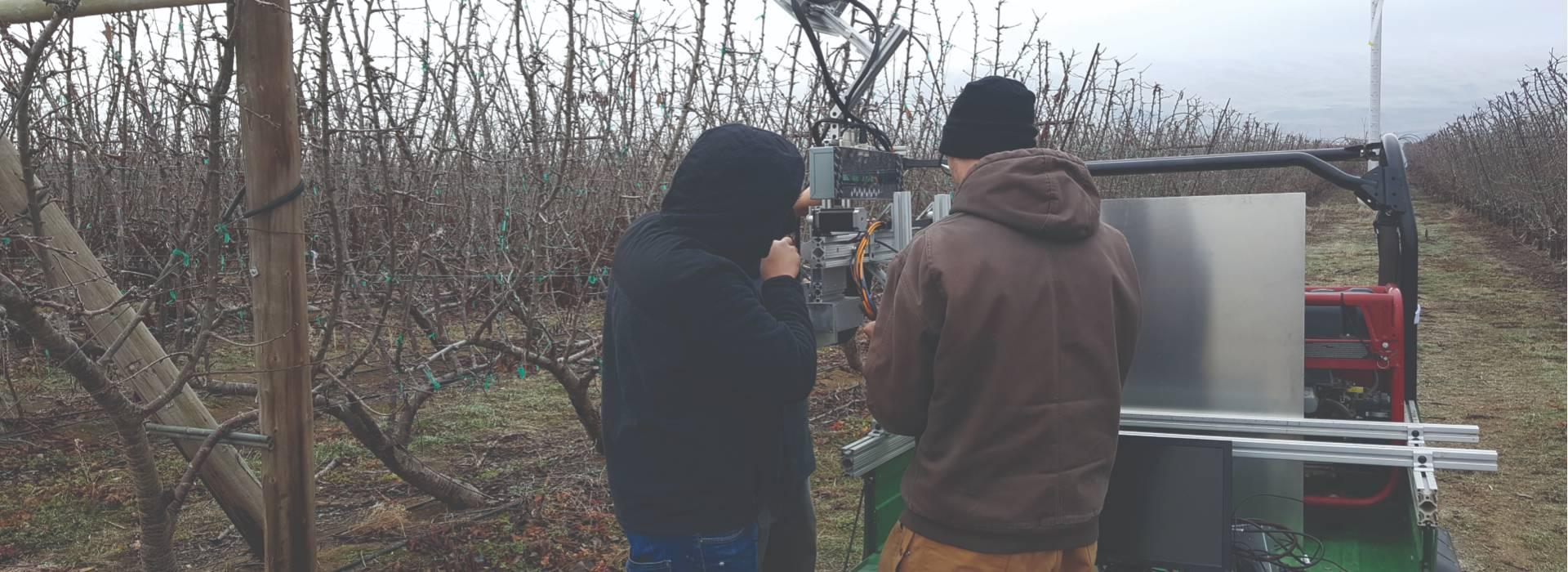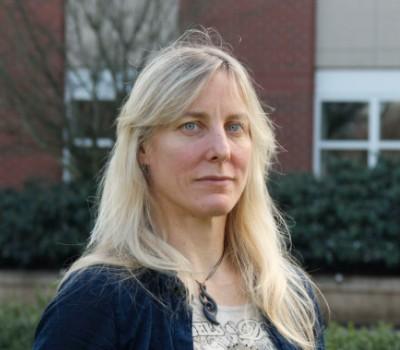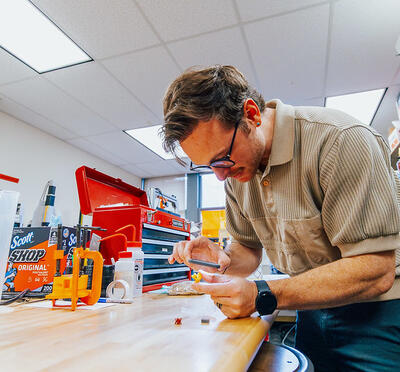When you think of robots, chances are you picture them in an industrial setting, such as an automotive assembly plant. But one field where robots are poised to make a big impact over the next couple of decades is literally out on the field — in farms and orchards, harvesting food crops.
Mechanization in agriculture began in earnest with the advent of the tractor, which had become standard farm equipment by the 1930s. Today, only about 2% of the U.S. workforce works on farms, compared to about one-third around the time of World War II.
But while machinery is widely used to harvest major row crops such as corn, soy, and wheat, most specialty crops — delicate things like fresh fruits and vegetables — are still harvested by hand. It’s backbreaking work, and farms are having a hard time finding enough workers to pick everything during their relatively short harvest seasons every year.
Envisioning a future where technology has freed humans from such drudgery, Joe Davidson, assistant professor of robotics and a member of the Collaborative Robotics and Intelligent Systems Institute at Oregon State University, is working to develop robotic systems for agriculture.
His interest in robotics began at Washington State University, where he earned his doctorate working on a project to mechanize apple harvesting. Teaching a robot to pick an apple isn’t so easy, Davidson says.
“As a person, I could look down the middle of a row, and I could close my eyes, and I could reach into a tree, and I could feel around and say, ‘OK, that’s a branch … that’s a leaf, and … oh! There’s an apple!’” he said. “Then I could move my hand around the apple and, using my sense of touch, find the stem, put pressure against it, and pull. And I wouldn’t even have to look at the tree. But trying to replicate that with a robot is just a really difficult thing to do.”
It’s not that nobody has tried. Some of the first papers on robotic apple harvesting were published in the 1980s. But the technology has proved difficult to perfect and implement at commercial scale.
“That’s because the agricultural environment is so highly unstructured,” Davidson said. “It’s not like an automotive factory, where you have a very controlled environment, and parts can arrive at the exact same place the exact same time, over and over again. Every tree is different.
The lighting conditions change from day to day. And you’re trying to interact physically with an environment where every situation is different.” Before he could teach a robot how to pick apples, Davidson had to learn himself. His team developed a glove with force sensors on the fingertips and inertial measurement units on the back to get some hard data on hand movements and the forces involved: How much can you squeeze before it will cause bruising? How far do you actually have to pull the fruit before it separates from the tree? And so on.
“So, I know that if I approach a fruit in a certain way, and I twist it 45 degrees, I only have to pull it away maybe 5 centimeters from the tree. We tried to use that information when we developed our robotic system,” Davidson said.
In the short term, at least, robots aren’t likely to be replacing farm workers so much as taking up the slack where there just aren’t enough humans to get the job done.
“I think, initially, the robots will help fill that gap,” Davidson said. “And then, as the technology matures over the next 10 to 20 years, we’ll start to see widespread penetration where robots are picking most of the fruit.”
In addition to his work on harvesting, Davidson is working to develop robotic systems for tree pruning, along with Cindy Grimm, a professor of mechanical engineering and an expert in robotic grasping and manipulation. Both projects are funded by the U.S. Department of Agriculture.
“If harvesting is the most laborintensive activity in an orchard, then pruning is No. 2,” Davidson said. “I think, in a lot of ways, pruning is probably more complex than harvesting, because there are a lot more decision variables.”
The scope of Davidson‘s research recently branched out into precision agriculture — a dataintensive farming paradigm that targets inputs to individual plants — with a project funded by the Washington Tree Fruit Research Commission. Davidson envisions smart systems that can determine the specific needs of every single tree in the orchard.
“Right now, growers make all their management decisions — about fertilizer, herbicides, pesticides, all of that — at the orchard level,” he said. “And what we want to try and do is make these decisions at the individual tree level because, even in a single orchard, there’s a lot of soil variability. So, nitrogen is where we’re starting. If we have a system that makes the right decision for each tree, we can achieve optimal yields by making targeted applications.”
LEARN MORE
Listen to Davidson talk about the challenges involved in creating an apple-picking robot and more on a recent episode of “Engineering Out Loud.” Subscribe to the podcast on iTunes or Spotify, or listen online at engineeringoutloud.oregonstate.edu.





